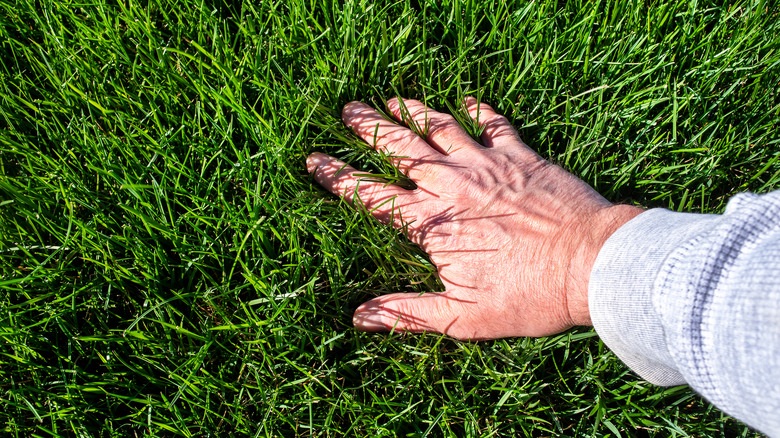Aeration is key to attaining a lush, vibrant turf that will turn your neighbors green with envy. However, aerating your lawn for healthier grass isn’t easy, especially if you mechanically bore holes in the tuft to promote deep-rooted resource penetration. There’s an easier, frictionless way out — liquid aeration. Simply put, instead of strenuously walking in aerator shoes or running heavy machines, you saunter around your green carpet and spritz it with a wetting agent using a spray bottle. The liquid helps break down thatch and other obstructive soil debris, allowing the verdure to breathe and absorb the moisture and nutrients necessary to showcase spectacular growth in the next season.
While the results aren’t immediate, they last far longer than what core aeration offers without turning your garden messy. However, like other aeration methods, liquid aeration has its limitations. It performs poorly on lawns with heavily condensed soils and nascent turf areas. In such circumstances, you’re better off combining core and liquid aeration to get the desired results.
Advantages of liquid aeration

Liquid aeration’s biggest advantage lies in the method. You don’t need to prep your body for a painful, muscle-pulling exercise on aeration day. Instead, fill a sprayer with the ammonium lauryl sulfate or yucca-containing solution and quickly cover the ground while basking in the sun. The results speak for themselves, adding up with every new application. Once the solution permeates deep within — way deeper than the 2-3 inches offered through manual aeration — because of the wetting agent action, its bio-stimulants copiously decompose thatch and debris build-up. It even enriches the soil with organic materials like kelp and humic acid that promote bacterial action, augmenting root growth.
Moreover, with liquid aeration, you don’t have to wonder if you’re renting the right kind of aerator or work out the ways to lug it back and forth between your yard and the rental service. It also eliminates the likelihood of your sprinklers and underground piping getting damaged during the process, as no digging means no equipment loss. The best part, though? Unlike core aeration, your tuft won’t be lined with nasty soil plugs that mar its aesthetic.
Cons of liquid aeration

While liquid aeration’s impact is long-enduring, it isn’t instantaneous. The product takes between 45 and 60 days to break down the soil and feed the roots with nutrients, making it a poor choice for gardeners seeking immediate effects. This process is even harder and longer in deeply compacted soils as the liquid may not be robust enough to loosen them. It also fails to penetrate thatch layers thicker than ½ inch. Further, it holds up feebly in new turf installations and may even involve extra work. The new grass seeds don’t enjoy adequate soil contact because the process doesn’t involve hole-punching. This prevents them from rooting deeply, compromising their growth.
Moreover, as plugs aren’t dug out, there’s nothing left to decompose and cover the recently sown seeds, depriving them of additional nutrition. Finally, liquid aeration may not be budget-friendly over the long term. Hiring a lawn care company can cost around $150 for a 10,000-square-foot area, while a DIY project can cost $1 for every 1000 square feet. These prices compound to a pretty penny and may exceed the amount you pay for a core aerator.



